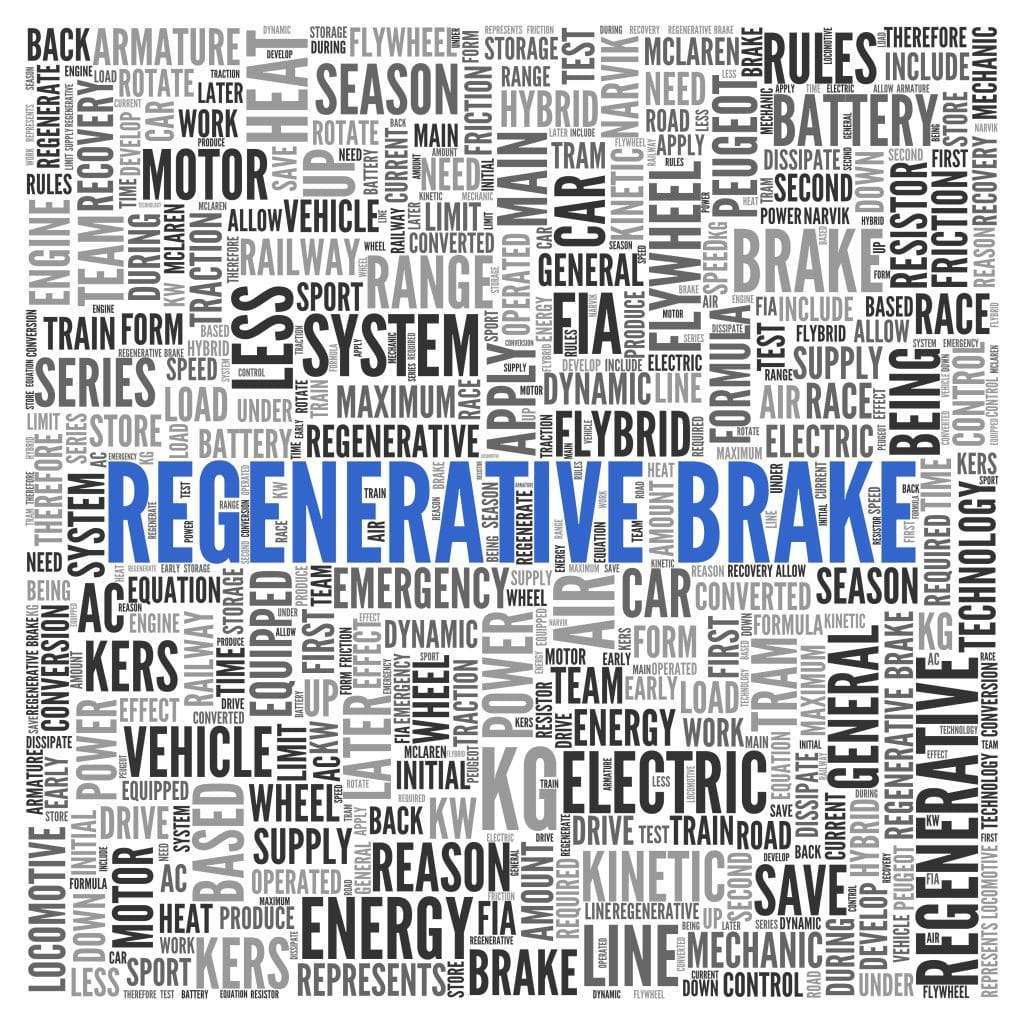What is regenerative braking
Regenerative braking in essence is the ability to transform rotational kinetic energy from a vehicle’s drive system into electrical energy which can be directly stored in the vehicle’s battery or used for the ancillary systems. Use commonly among electric and newer vehicles this system allows for greater energy efficiency when braking, various results can be achieved depending upon type of vehicle & level of regenerative braking. Using an electric vehicle as an example as it enters the braking stage, the drive motor with no need to be powered can now be spun via the energy of the moving vehicle, doing so decreases the the vehicles’ speed, essentially acting as a form of braking, dependant upon the set level, manufactures can control the amount of braking achieved via regenerative braking. Whilst vehicles still rely upon brake discs and pads, modern vehicles and electric vehicles combine both systems resulting in a greater energy efficiency, vehicles adopting Regenerative braking benefit from reduced brake pad and discs wear and electric vehicles further benefit from increased range.
The history of regenerative braking
Dating back to 1886 an inventor by the name of Frank J. Sprague introduced two important inventions, non-sparking motor with fixed brushes, and regenerative breaking. By 1888 Sprague had deployed regenerative braking in electric street cars (trams) which proved to be very successful. Regenerative braking soon became widely used with electronic railway systems. From the use of generative braking the Pendolino fleet on the West Coast Main claims energy savings of 17%.
As for the first use of regenerative braking in vehicles, many electric vehicle manufacturers experimented with generative braking, an early example of an electric vehicles using regenerative braking would be the 1912 Runabout by Baker Motor Vehicle, this model relied on a manual switch to deploy a dynamo, the vehicle had a top speed of 14mph and with the nature of regenerative braking further slowing down the vehicle it could only be practically used when travelling downhill. Major advancements in automatic regenerative braking would come in the form of the 1976 / 1997 AMC Amitron, a prototype vehicle that did not enter production due to costly batteries, a shame considering that the vehicle had a respectable range of one hundred and fifty ( 150 ) miles traveling at a top speed of fifty miles per hour ( 50 MPH ).
Motor Sports
A form of regenerative braking would be introduced and experiment Formula 1 in 2008, and was widely adopted and successfully use in 2011. Kinetic Energy Recovery System (KERS) was first introduce to aid in environmental technologies for Formula 1. There are two types of KERS, Electronic and mechanical, one mechanical form of KERS relied on a flywheel capturing the kinetic energy, spinning the wheel up 80,000 rpm to later transfer back to the drive system. Electronic KERS used an electric motor / generator generating electricity which would be stored in super-capacitors and at a touch of a button the stored electronic energy could be sent back to the electronic motor to deliver more power to the vehicle’s wheels resulting in greater speed.
Conclusion
Regenerative braking offers a wide range of benefits not only for commercial vehicles but for all forms of transportation. Through the use of regenerative braking, railways systems use less electricity resulting in greater environmental benefits and electric vehicles are able to travel further. Regenerative braking plays a vital role in creating a sustainable future, by allowing use to capture appose to waste energy we create and follow and great fundamental standard.
sources
https://en.wikipedia.org/wiki/Frank_J._Sprague
https://en.wikipedia.org/wiki/Regenerative_braking#cite_note-18

